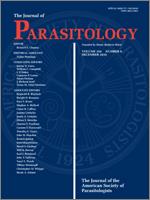Cryptosporidiosis is one of the leading causes of diarrhea in humans and several other vertebrate species. Because surveys of Cryptosporidium genotypes from animals and humans living in the same region are rare, our understanding of the importance of zoonotic transmission in the epidemiology of cryptosporidiosis remains superficial. PCR was used to amplify a portion of the Cryptosporidium 18S small subunit ribosomal RNA gene from fecal DNA from humans and livestock living in Ekiti and Oyo states, Nigeria. PCR-positive samples were further analyzed using PCR targeting the heat-shock protein HSP-70, the actin, and the sporozoite glycoprotein gene gp60. A questionnaire was used to collect demographic information. Sixteen of 187 samples collected were Cryptosporidium 18S PCR positive. Of these, 5 samples originating from HIV-positive patients, 5 from otherwise healthy children, 2 from chickens, 3 from goats, and 1 from a dog were positive for at least 1 marker. Sequencing of the 18S rRNA amplicons revealed the presence of Cryptosporidium parvum in 2 HIV positive patients and in a child; the actin sequence confirmed the presence of this species. Two samples of HIV-positive patients amplified Cryptosporidium hominis 18S rRNA, one of them confirmed by the HSP-70, actin, and gp60 sequences. Cryptosporidium meleagridis was found in another HIV patient, while C. hominis was detected in 3 children (of which 2 were confirmed by gp60). Cryptosporidium muris was found in 1 child. In birds, we found C. meleagridis and, significantly, C. parvum, whereas we detected C. parvum and C. muris in 1 goat each. The only dog sampled was positive for Cryptosporidium canis. We conclude that, in the environment we surveyed, humans and animals are a potential part of the same transmission cycle. Measures to prevent zoonotic transmission should therefore be considered to reduce the prevalence of cryptosporidiosis.
How to translate text using browser tools
1 December 2018
Genotypic Characterization of Cryptosporidium Species in Humans and Peri-Domestic Animals in Ekiti and Oyo States, Nigeria
A. B. Ayinmode,
B. C. M. Oliveira,
O. O. Obebe,
H. O. Dada-Adgebola,
A. I. Ayede,
G. Widmer
ACCESS THE FULL ARTICLE

Journal of Parasitology
Vol. 104 • No. 6
December 2018
Vol. 104 • No. 6
December 2018




